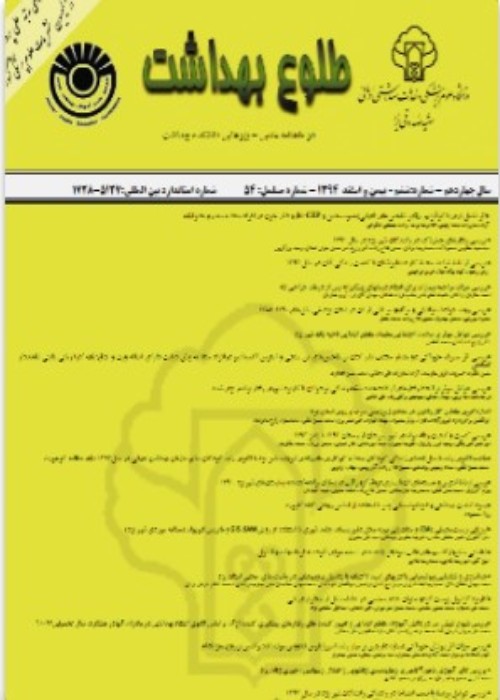A Survey of Municipal Solid Waste Generation in 22 Regions of Tehran With Solid Waste Reduction Approach
Author(s):
Abstract:
Introduction
Solid waste reduction is a key and fundamental factor in creating a sustainable society. Tehran Municipality has embarked on a series of positive measures in recent years in different areas of waste management such as source separation, mechanized waste collection, and constructing compost factories. However these measures have not only brought about any reduction in solid waste reduction but have also resulted in their increase. In this article, first we will describe the current situation of waste management in Tehran. Then since having an understanding of the type and amount of the generated solid waste is important in defining strategies and programs aiming at reduction of waste generation, we manage to have evaluation of the current situation of municipal waste generation in 22 regions of Tehran. Methods
The study was a descriptive cross-sectional one conducted from 2010 to 2014. Relevant officials of the waste recovery in 22 regions of Tehran were approached in order to collect data about municipal solid waste generation through interviewing, filling out questionnaires, conducting field visits from Aradkooh Disposal and Processing Complex and collecting information on disposal and destiny of wastes. Then the data were compiled and analyzed. Results
Total solid waste generation in Tehran from 2010 to 2014 amounted to respectively 3389662, 3399344, 3449338 and 3245157 Metric Tons, categorized into three groups of municipal, companies and townships and hospital wastes. Most of the generated waste produced in Tehran was that of households and commercial (known as municipal waste) from 22 Regions of Tehran. Based on the surveys conducted, per capita solid waste generation of 11 regions of Tehran ranged from 550 to 1000 grams and in other 11 ones from 1000 to 1521 grams per capita per day. The lowest and highest waste generation rate belonged respectively to region 13 with 556 grams and region 12 with 1521 grams per capita per day in 2011. Conclusion
Comparing per capita generation of municipal solid waste in different municipal regions in Tehran with maximum acceptable capacity of waste generation indicates the deviation of waste generation of all Tehran regions from the standard acceptable amount. Therefore, not only is it necessary to plan and take strategic measures to reduce Tehran waste generation but also these programs and measures should be specific to each region considering its specifications and solid waste quality and quantity.Keywords:
Language:
Persian
Published:
Tolooe Behdasht, Volume:14 Issue: 2, 2015
Pages:
23 to 33
magiran.com/p1420714
دانلود و مطالعه متن این مقاله با یکی از روشهای زیر امکان پذیر است:
اشتراک شخصی
با عضویت و پرداخت آنلاین حق اشتراک یکساله به مبلغ 1,390,000ريال میتوانید 70 عنوان مطلب دانلود کنید!
اشتراک سازمانی
به کتابخانه دانشگاه یا محل کار خود پیشنهاد کنید تا اشتراک سازمانی این پایگاه را برای دسترسی نامحدود همه کاربران به متن مطالب تهیه نمایند!
توجه!
- حق عضویت دریافتی صرف حمایت از نشریات عضو و نگهداری، تکمیل و توسعه مگیران میشود.
- پرداخت حق اشتراک و دانلود مقالات اجازه بازنشر آن در سایر رسانههای چاپی و دیجیتال را به کاربر نمیدهد.
دسترسی سراسری کاربران دانشگاه پیام نور!
اعضای هیئت علمی و دانشجویان دانشگاه پیام نور در سراسر کشور، در صورت ثبت نام با ایمیل دانشگاهی، تا پایان فروردین ماه 1403 به مقالات سایت دسترسی خواهند داشت!
In order to view content subscription is required
Personal subscription
Subscribe magiran.com for 70 € euros via PayPal and download 70 articles during a year.
Organization subscription
Please contact us to subscribe your university or library for unlimited access!


